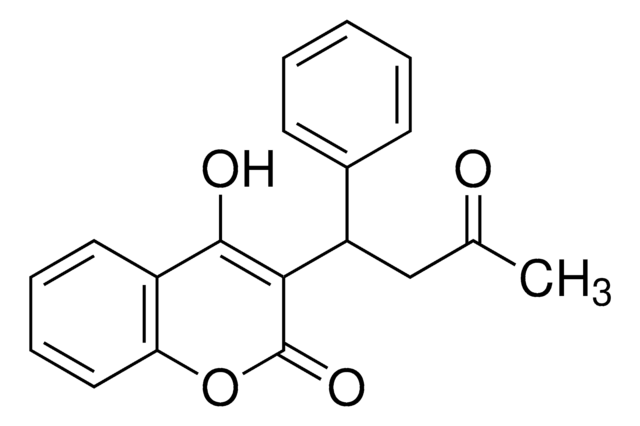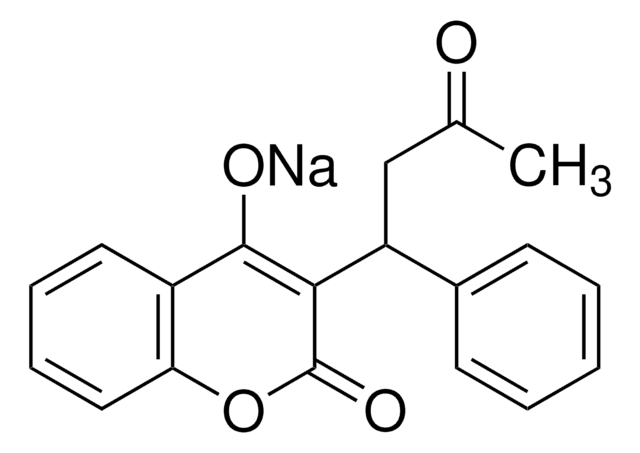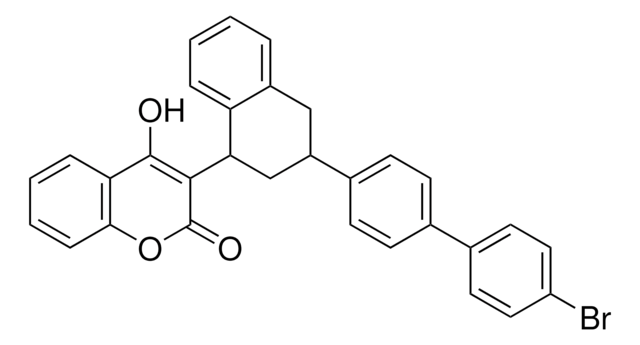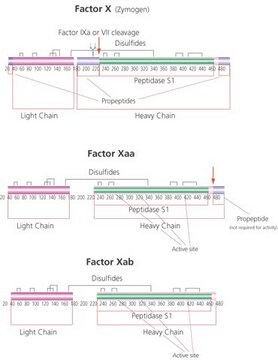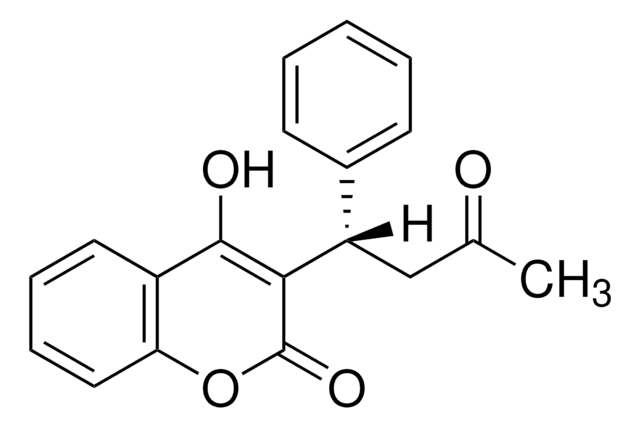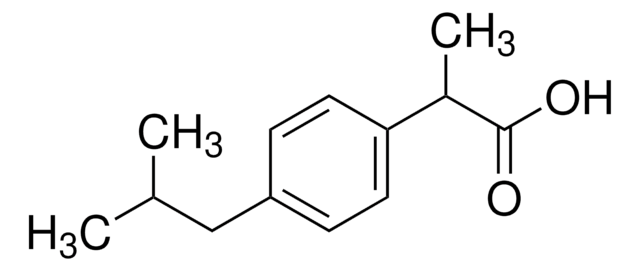1719000
USP
Warfarin
United States Pharmacopeia (USP) Reference Standard
Sinónimos:
4-Hydroxy-3-(3-oxo-1-phenylbutyl)coumarin, Coumafene
About This Item
Productos recomendados
grade
pharmaceutical primary standard
API family
warfarin
manufacturer/tradename
USP
mp
162-164 °C (lit.)
application(s)
pharmaceutical (small molecule)
format
neat
storage temp.
2-8°C
SMILES string
CC(=O)CC(c1ccccc1)C2=C(O)c3ccccc3OC2=O
InChI
1S/C19H16O4/c1-12(20)11-15(13-7-3-2-4-8-13)17-18(21)14-9-5-6-10-16(14)23-19(17)22/h2-10,15,21H,11H2,1H3
InChI key
PJVWKTKQMONHTI-UHFFFAOYSA-N
Gene Information
human ... VKORC1(79001)
¿Está buscando productos similares? Visita Guía de comparación de productos
General description
Application
- Warfarin Sodium
- Warfarin Sodium Tablets
- Warfarin Sodium for Injection
Analysis Note
Other Notes
Legal Information
signalword
Danger
Hazard Classifications
Acute Tox. 1 Dermal - Acute Tox. 1 Inhalation - Acute Tox. 2 Oral - Aquatic Chronic 2 - Repr. 1A - STOT RE 1 Oral
target_organs
Blood
Storage Class
6.1A - Combustible, acute toxic Cat. 1 and 2 / very toxic hazardous materials
wgk_germany
WGK 3
flash_point_f
Not applicable
flash_point_c
Not applicable
Certificados de análisis (COA)
Busque Certificados de análisis (COA) introduciendo el número de lote del producto. Los números de lote se encuentran en la etiqueta del producto después de las palabras «Lot» o «Batch»
¿Ya tiene este producto?
Encuentre la documentación para los productos que ha comprado recientemente en la Biblioteca de documentos.
Los clientes también vieron
Nuestro equipo de científicos tiene experiencia en todas las áreas de investigación: Ciencias de la vida, Ciencia de los materiales, Síntesis química, Cromatografía, Analítica y muchas otras.
Póngase en contacto con el Servicio técnico